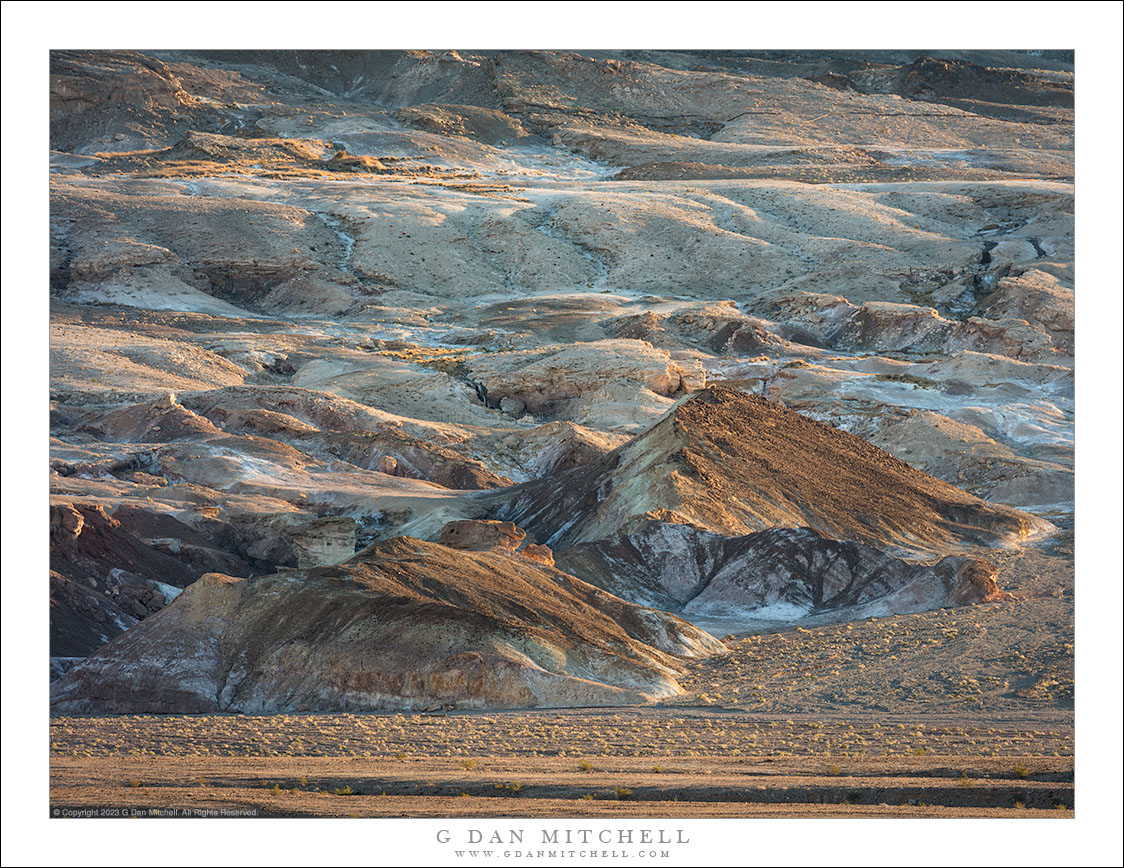
Near Keane Wonder Mine. © Copyright 2023 G Dan Mitchell.
Rugged terrarin near the Keane Wonder Mine, Death Valley.
One morning on my recent photographic Death Valley trip I headed up the road from the Valley toward Beatty, Nevada. I didn’t plan to actually go to Beatty, butI wanted to learn a bit more about the closure of part of the read between the park and Beatty, to photograph some large-scale vistas, and perhaps to check out the area near the Keane Wonder Mine. I knew that the latter was closed for restoration work, but I thought I might be able to at least get close to it. It turned out that this was not the case, so I decided to photograph the landscape near the mine from a distance.
The mine was one of the more productive in Death Valley during the 1900s. Its works are extensive, and a lot of remnants are still there. (For years it was closed off due to safety concerns, but access was again permitted a few years agp.) Much of the area in the photograph is more or less natural landscape, but a closer look reveals tailings, the remains of a long pipe system that likely supplied water, and some other evidence of mining.
G Dan Mitchell is a California photographer and visual opportunist. His book, “California’s Fall Color: A Photographer’s Guide to Autumn in the Sierra” is available from Heyday Books, Amazon, and directly from G Dan Mitchell.
Blog | About | Twitter | Flickr | Facebook | Email
Links to Articles, Sales and Licensing, my Sierra Nevada Fall Color book, Contact Information.
Scroll down to leave a comment or question. (Click this post’s title first if you are viewing on the home page.)
All media © Copyright G Dan Mitchell and others as indicated. Any use requires advance permission from G Dan Mitchell.
